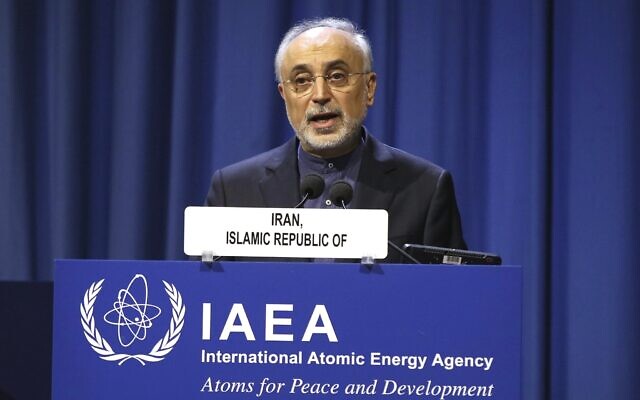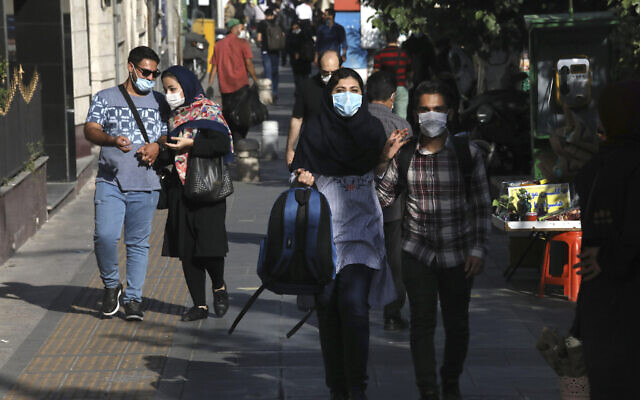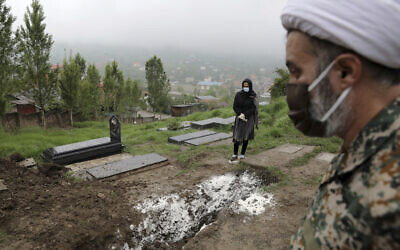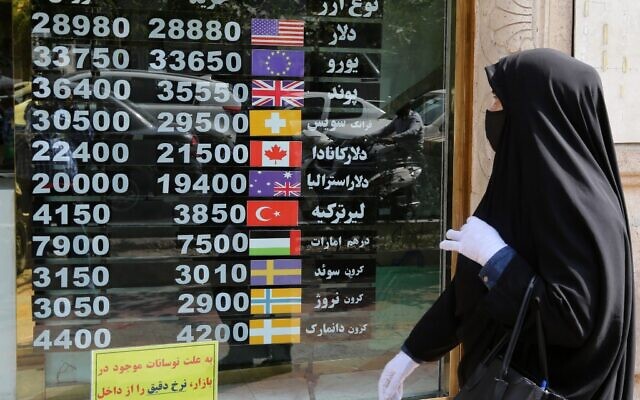Ali Akbar Salehi said to be in good condition at home; Tehran announces 251 fatalities in 1 day with nearly 4,500 critical patients, as currency crashes to record low<
By AGENCIES

File: The head of Iran’s Atomic Energy Organization Ali Akbar Salehi delivers his speech at opening of the general conference of the IAEA in Vienna, Austria, September 16, 2019. (AP Photo/Ronald Zak)
The head of Iran’s atomic energy organization is the latest senior official to test positive for the coronavirus, the semiofficial Tasnim news agency reported Sunday.
According to the report, Ali Akbar Salehi, who is also a vice president of Iran, confirmed positive for the virus last week and has been in home quarantine since. The news agency reported that his health condition is currently good.
Meanwhile, a separate report by Tasnim news agency said the country’s vice president in charge of budget and planning, Mohammad Bagher Nobakht, had also tested positive for the virus.
Iran has seen several top officials contract the virus over past months, including senior Vice President Eshaq Jahangiri and Vice President Massoumeh Ebtekar. A number of Cabinet ministers have also tested positive, including Tourism Minister Ali Asghar Mounesan and the former Industry Minister Reza Rahmani.
The head of an Iranian government task force on the coronavirus who had urged the public not to overreact about its spread was among the first senior officials to contract the virus in late February.

People wearing protective face masks to help prevent the spread of the coronavirus walk on a sidewalk in downtown Tehran, Iran, Sept. 20, 2020 (AP Photo/Vahid Salemi)<
>
Iran announced on Sunday its highest single-day death toll from the coronavirus with 251 confirmed dead, the same day the nation’s currency hit a record low.
Health Ministry spokesperson Sima Sadat Lari said the total confirmed death toll now stands at 28,544, making it the hardest-hit country in the region. Iran had previously recorded its highest daily death toll four days earlier with 239 new fatalities.
A further 3,822 new cases were confirmed over the past 24-hour period, raising recorded nationwide cases to 500,075. Nearly 4,500 patients are in critical condition.

A woman wearing mask and gloves prays at the grave of her mother who died from the coronavirus, at a cemetery in the outskirts of the city of Babol, in northern Iran, April 30, 2020. (AP Photo/Ebrahim Noroozi)<
>
The virus first appeared in Iran at the same time the government was trying to shore up support for the country’s parliamentary elections, which saw the lowest voter turnout since the 1979 Islamic Revolution that brought its clerical leadership to power.
Iran has struggled to contain the spread of the virus across the nation of 80 million people, initially beating it back only to see a spike in cases again, beginning in June.
President Hassan Rouhani announced on Saturday that the country would start imposing fines for breaches of health regulations in Tehran. Iran had previously held back from using fines to enforce mask-wearing in public and other health protocols.
The government has largely resisted imposing wide-scale lockdowns as the economy teeters from continued US economic sanctions that effectively bar Iran from selling its oil internationally.
Money exchange shops in Tehran sold the US dollar at 315,000 rials on Sunday, compared to what was 32,000 rials to the dollar at the time of Iran’s 2015 nuclear deal with world powers.

An Iranian woman checks a display board at a currency exchange shop as she walks by in the capital Tehran, on September 29, 2020 (ATTA KENARE / AFP)<
>
<
>
The currency plummeted further on Sunday days after the Trump administration’s decision to blacklist 18 Iranian banks that had so far escaped the bulk of re-imposed sanctions.
The move subjects non-Iranian financial institutions to penalties for doing business with them, effectively cutting the banks off from the international financial system.
US President Donald Trump unilaterally withdrew the United States from the agreement in 2018 and reimposed crushing economic sanctions.



Leave a Reply
You must be logged in to post a comment.